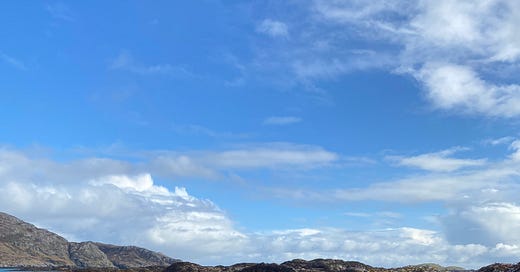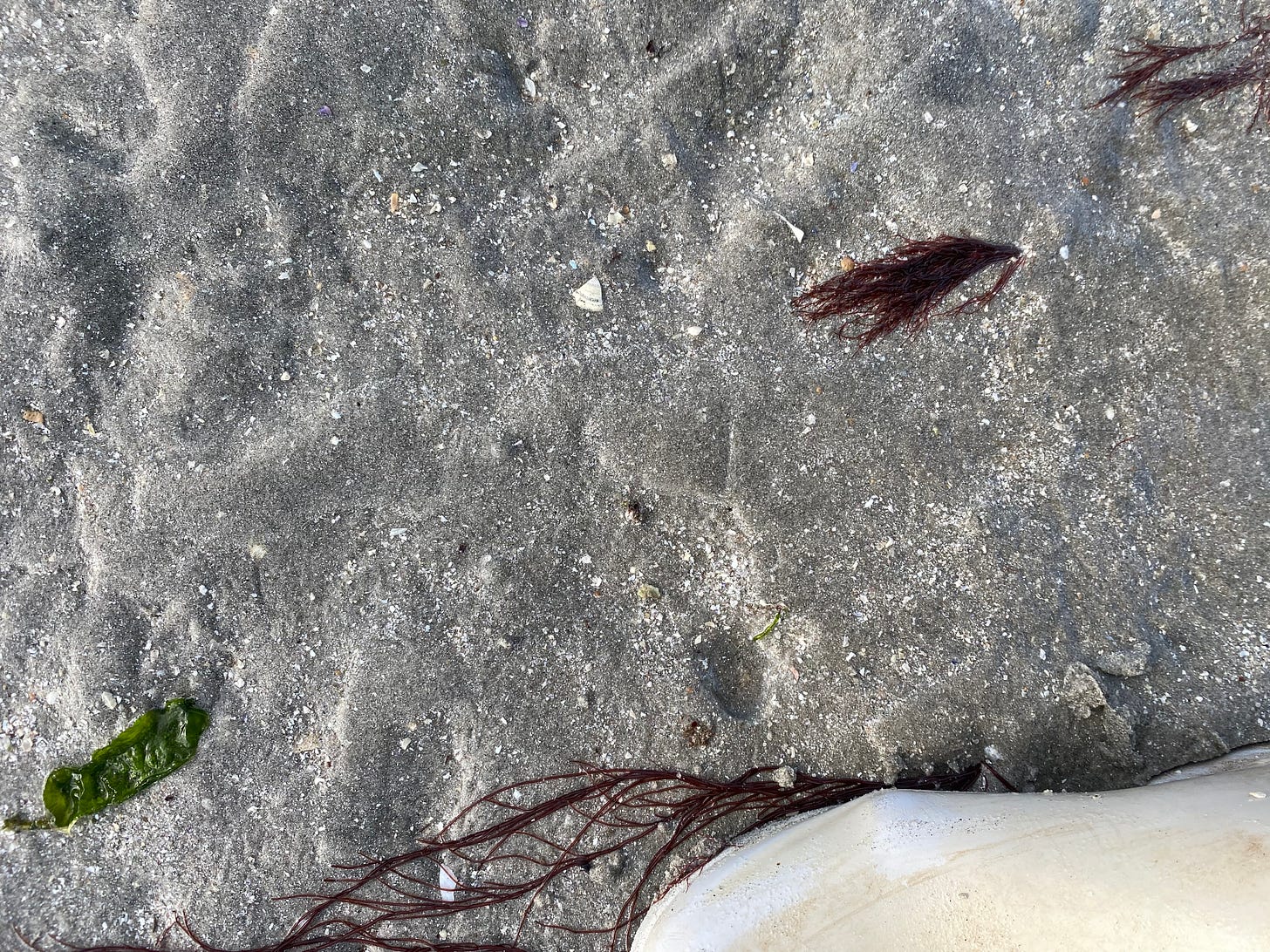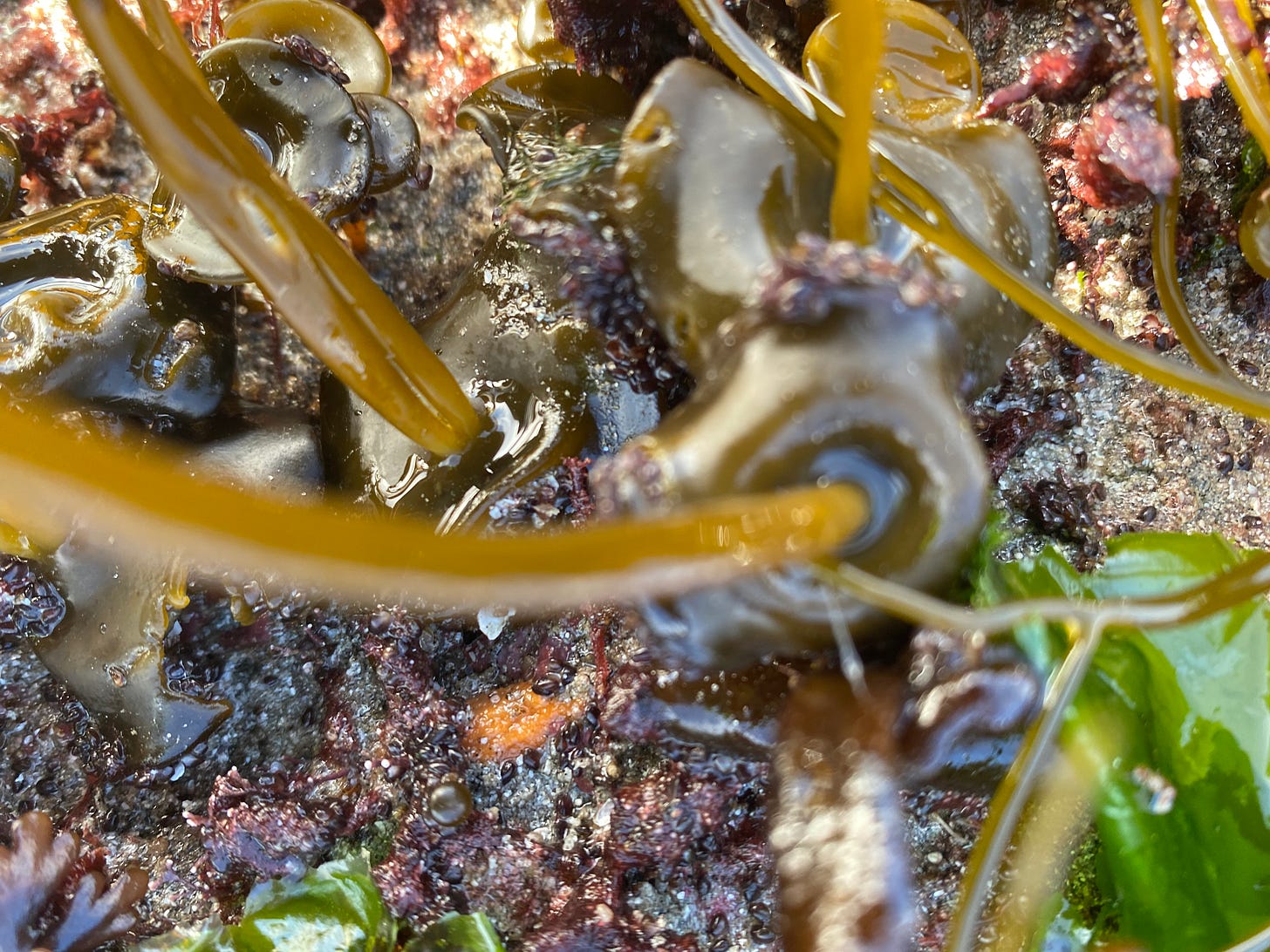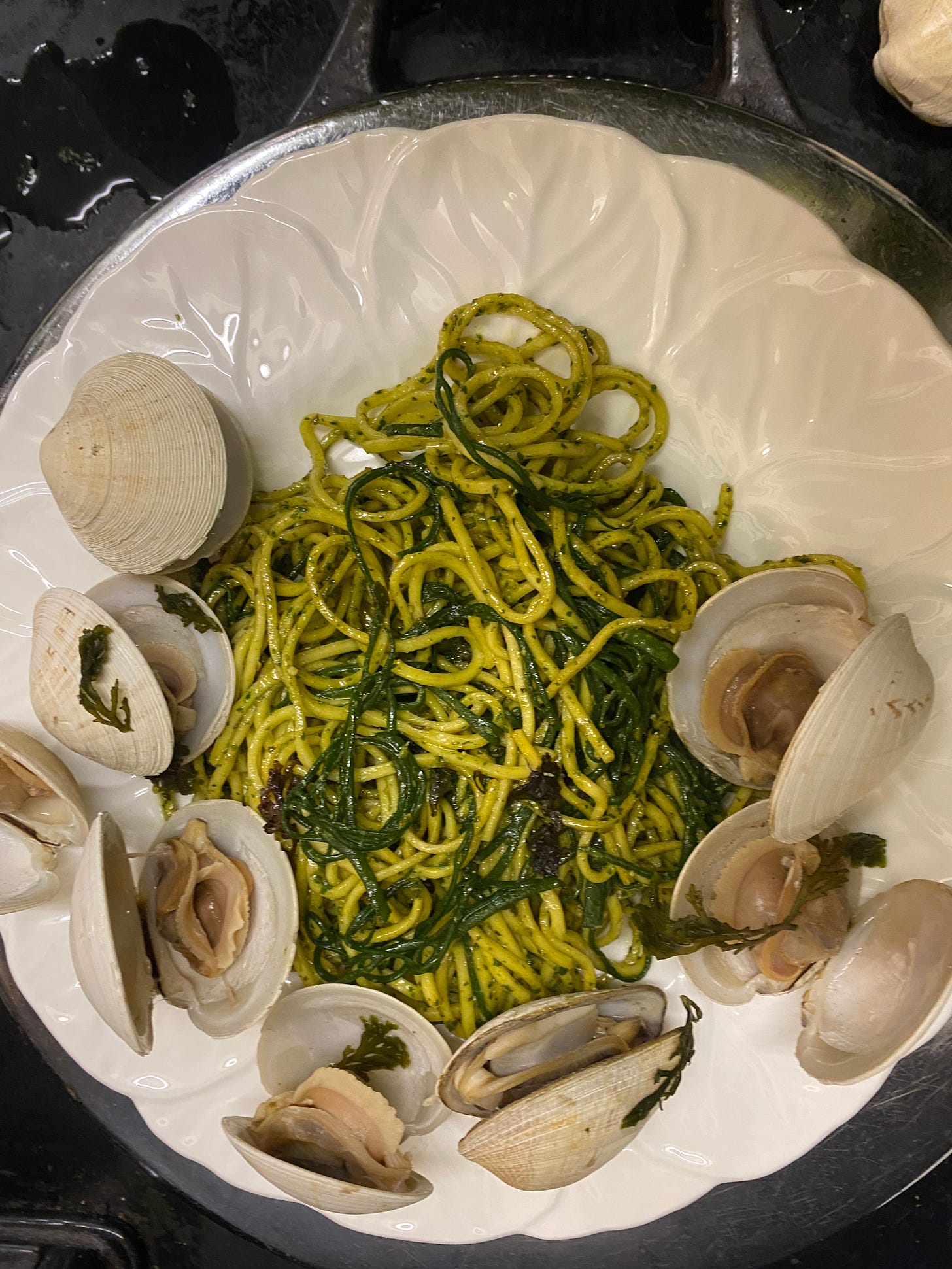It was rumoured that there would be a good spring tide on Thinking Day and as luck would have it, it was to reach it lowest point during a lunch hour. I knew that it would be tricky to entice South Uist’s doctor to join me on a seaweeding expedition because it coincided with a Uist & Barra Hospital discharge meeting. Grabbing a walk at a low spring tide is high on my list of priorities. I am pretty determined to catch a spring tide whatever the weather. South Glendale beach at the southern tip of the Isle of South Uist, is a perfect seaweeding destination. Take a friend and it may be gossipy, but it is a shared experience. However, it is an activity you can do alone too. Foraging is a perfect opportunity to reflect. A most excellent pastime on any day, especially one named Thinking Day. Foraging is good for the soul. A time to stop, stare and breathe slowly.
The sun had been shining, but by the time I’d driven towards the Eriskay Causeway, it was raining and beginning to blow a hoolie. My welly boots live in the car boot, but in my haste catch the lowest of spring tides, I’d forgotten my coat. The tide waits for no man. However, luck was on my side because my wellies were hidden under the doctor’s fluorescent medical coat. Perhaps the coat is a tad on the large side, but it’s definitely waterproof. There is no such thing as bad weather just a poorly clad forager.
February 22nd was windy. Standard for the Outer Hebrides. The wind pushed me shoreward and towards uneven channel wrack clad rocks. Helpful. I’m recovering from an operation so currently, I approach rocks rather gingerly. A stick is cumbersome so I use my trustworthy and sturdy, basket handle as a staff for stability. I waded through the stream towards the sand, where the clam Cerastoderma edule, a cockle shell with corrugated ridges hides under the sand. A few cockles were scattered on the sand surface, but the majority request that the forager engages in a game of sand hide and seek. The stream can be peaty brown after rain, but on Thinking Day, it was crystal clear. To forage the clams in this part of the beach you need a rake and time, to fill your cockling bucket. The wind helped me move hastily down the beach towards rocks that are only accessible at a low, low tide. By this time the sun had appeared.
On reaching the common razor clam Ensis ensis zone, I got wet. These sneaky little clams that some call spoots, form keyholes that tell the razor clam forager a tale. Spy the indentation or slit in the sand (about 2cm) known as a keyhole, and await a jet of water. Some foragers sprinkle salt on the keyholes to entice the spoots to the surface. Be warned ladies in skirts and petticoats, the razor clam’s spray reaches for the sky in forceful bidet style. Spooting involves being very quiet, watching for the wee jet of water and then quickly digging in the sand to retrieve the razor clam. Be quick. These bivalves are speedy sand burrowers. Care is required because the shell is sharp - remember the old fashioned barber’s razor. A spooting foraging tip shared by a generous crofter, is to await the turn of the tide. At this point some spoots pop through the sand and wave in a rather rude, showy fashion. Grab the emerging razor clam shell firmly to claim your prize. Result. No digging involved. Razor clam recipe ideas are in my book The Forager’s Kitchen Handbook.
On Thinking Day, I wasn’t interested in razor clams because time was against me (the limits of a lunch hour). Spooting can’t be rushed.I walked on towards the water’s edge and spied the first of my bounty, a palourde lying on the sand. Easy picking for the forager. Effortless.
Gently rub the shell of a palourde which is also known as a carpet shell clam, with your fingers - it’s smooth. These shells remind me of a child’s spinning top; whirls of faded, laundry whites mingled with shades of tan and light brown. This seaside treasure that demands illustration Elisabeth Luard. Palourdes are deliciously sweet and said to be best in colder months.On the fishmonger’s counter, this species of clam commands a higher price than the ridged cockle shell. All clams are free to the forager, but I urge you to take no more than you need to feed yourself and immediate family.Don’t be greedy.
I know that on Uist, the new season sea spaghetti begins in early January; yet I was surprised at the thickness of the late February fronds.Yep, it will still cook in noodle time, but the increased girth of the frond drove home the point that seaweed, in common with terrestrial vegetables, ages with the season. A season is short and like the tide, awaits no man. Sea spaghetti is easily recognised, it looks like its namesake the durum wheat pasta. A brown seaweed sea spaghetti is attached to the rock by a rather natty wee button. Don’t pick too many buttons for sustainability reasons. You could adapt my pickled kelp stipe recipe in Seaweed in the Kitchen and leave the buttons to mature for a few years, in Pontack style. The result is both tender and surprisingly sweet.
I also gathered the fern like seaweeds, Royal Fern and Pepper dulse. I’ve often wondered if the Seaweed Sisterhood of whom I write in Seaweed in the Kitchen , nibbled on this piquant, garlicky seaside weed. Check out the Osmundea species.Indeed I wonder if my Royal Fern identification is correct; I am not a phycologist.
I steamed the palourdes with pepper dulse/ royal fern until the shells opened, and served the clams with sea spaghetti and durum wheat pasta tossed in pepper dulse nutty butter and basil & sorrel pesto. Simple. A February foraging win.














Lovely stuff, Fiona! Yr so right about tidelines I've quite a few shellfish pics stashed away (mostly recently, a scallop). Can't work out how to add 'em here - no image facility.